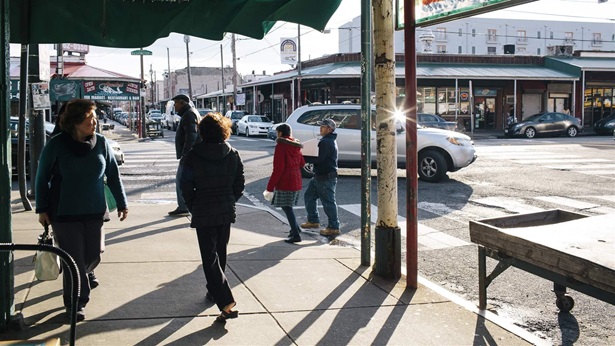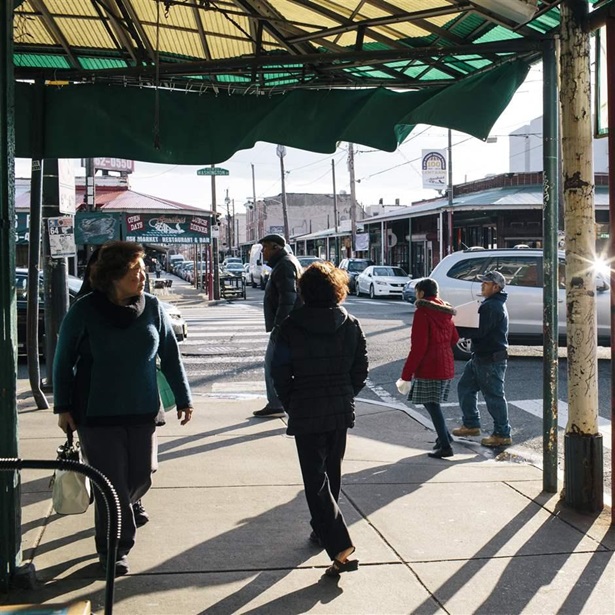Pew Report Examines Philadelphia’s Foreign-Born Population
Data show immigrants have fueled the city’s population growth, increased the number of workers, and added to the already high share of poor
PHILADELPHIA—A new analysis by The Pew Charitable Trusts finds that the number of foreign-born residents of Philadelphia increased 69 percent since 2000 and represented nearly 15 percent of the city’s population in 2016—the highest share since 1940. These 232,000 immigrants made up 19 percent of workers, roughly a quarter of children, and 14 percent of those in poverty.
The report, “Philadelphia’s Immigrants: Who They Are and How They Are Changing the City,” looks at the economic and social characteristics of the city’s foreign-born—including their countries of origin, income, level of education, and work status—and examines how these characteristics have changed in recent years, while also making comparisons with the nation, the Philadelphia suburbs, and nine other major cities. The research relied primarily on census data, with 2016 being the last year for which numbers were available, and included results of a Pew public opinion survey.
“The degree to which immigrants have fueled Philadelphia’s population resurgence is striking,” said Tom Ginsberg, a manager with Pew’s Philadelphia research initiative and the report’s author. “By taking a closer look at this expanding demographic, Pew’s research shows the potential they have to shape the city’s economic and social landscape in ways that present both opportunities and challenges.”
Among the other key findings:
- More than a quarter of all Philadelphians in recent years—around 390,000 residents—were either immigrants or U.S. natives with immigrant parents. This included nearly 76,000 children under age 18, or about 1 in 4 city children.
- From 2000 to 2016, a period in which the city’s population grew for the first time in half a century, the number of foreign-born residents rose by roughly 95,000 while the number of U.S.-born residents fell by 44,500.
- Nearly 1 in 5 Philadelphians in the labor force in 2016 was an immigrant, with the biggest number working in service jobs in the health care and education, hospitality, and retail sectors. The number of immigrants in the labor force grew by nearly 66,000 from 2000 to 2016, more than double the increase among U.S.-born workers over the same period.
- Immigrants’ median household income was about $39,700, close to that of U.S.-born Philadelphians. The poverty rate among immigrants was 24 percent, which was slightly below the rate for natives. In recent years, however, the number of immigrants living in poverty has been growing at a faster rate than among natives.
- About 3 in 10 adult immigrants had college degrees, a slightly higher share than for U.S.-born residents. Nearly another 3 in 10 immigrants had little schooling, a significantly higher share than among natives.
- The fastest-growing group of foreign-born Philadelphians came from Africa, and the largest groups hailed from Asia and the Americas—the latter mostly from Latin America and the Caribbean. Europeans made up their lowest share of the immigrant population in recorded history.
- In the Philadelphia region, roughly two immigrants lived outside the city for every one living in the city. Starting in the 1970s, the immigrant population has grown faster in the suburbs than in the city, although in recent years both locales have been growing at similar rates.
- In a 2016 Pew survey, immigrants were overwhelmingly upbeat about the city’s future and more positive than U.S.-born Philadelphians about certain aspects of city life, such as public schools. Most U.S.-born Philadelphians, for their part, had positive things to say about immigration, and nearly two-thirds described themselves as “sympathetic” or “very sympathetic” to unauthorized immigrants in the city.
###
To download the full report and its accompanying graphics and maps, visit pewtrusts.org/research-and-analysis/reports/2018/06/07/philadelphias-immigrants.
The Pew Charitable Trusts is driven by the power of knowledge to solve today’s most challenging problems. Pew’s Philadelphia research initiative provides timely, impartial research and analysis on key issues facing Philadelphia for the benefit of the city’s residents and leaders. Learn more at pewtrusts.org/philaresearch.









